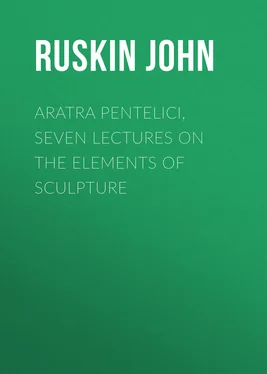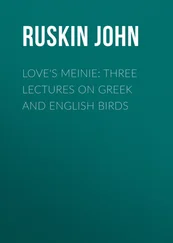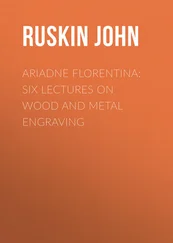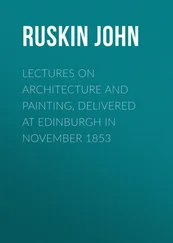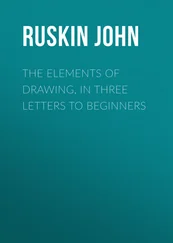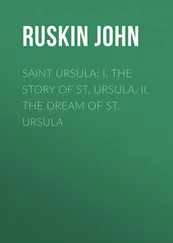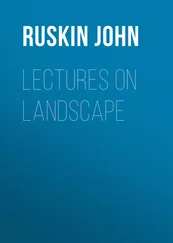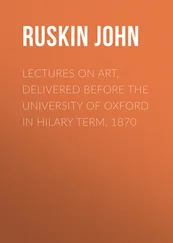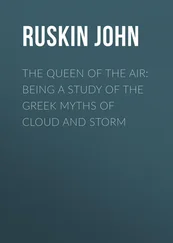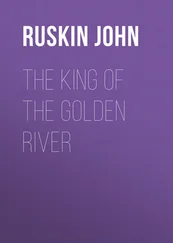John Ruskin - Aratra Pentelici, Seven Lectures on the Elements of Sculpture
Здесь есть возможность читать онлайн «John Ruskin - Aratra Pentelici, Seven Lectures on the Elements of Sculpture» — ознакомительный отрывок электронной книги совершенно бесплатно, а после прочтения отрывка купить полную версию. В некоторых случаях можно слушать аудио, скачать через торрент в формате fb2 и присутствует краткое содержание. Жанр: foreign_antique, foreign_home, literature_19, visual_arts, на английском языке. Описание произведения, (предисловие) а так же отзывы посетителей доступны на портале библиотеки ЛибКат.
- Название:Aratra Pentelici, Seven Lectures on the Elements of Sculpture
- Автор:
- Жанр:
- Год:неизвестен
- ISBN:нет данных
- Рейтинг книги:5 / 5. Голосов: 1
-
Избранное:Добавить в избранное
- Отзывы:
-
Ваша оценка:
- 100
- 1
- 2
- 3
- 4
- 5
Aratra Pentelici, Seven Lectures on the Elements of Sculpture: краткое содержание, описание и аннотация
Предлагаем к чтению аннотацию, описание, краткое содержание или предисловие (зависит от того, что написал сам автор книги «Aratra Pentelici, Seven Lectures on the Elements of Sculpture»). Если вы не нашли необходимую информацию о книге — напишите в комментариях, мы постараемся отыскать её.
Aratra Pentelici, Seven Lectures on the Elements of Sculpture — читать онлайн ознакомительный отрывок
Ниже представлен текст книги, разбитый по страницам. Система сохранения места последней прочитанной страницы, позволяет с удобством читать онлайн бесплатно книгу «Aratra Pentelici, Seven Lectures on the Elements of Sculpture», без необходимости каждый раз заново искать на чём Вы остановились. Поставьте закладку, и сможете в любой момент перейти на страницу, на которой закончили чтение.
Интервал:
Закладка:
John Ruskin
Aratra Pentelici, Seven Lectures on the Elements of Sculpture / Given before the University of Oxford in Michaelmas Term, 1870
PREFACE
1. I must pray the readers of the following Lectures to remember that the duty at present laid on me at Oxford is of an exceptionally complex character. Directly, it is to awaken the interest of my pupils in a study which they have hitherto found unattractive, and imagined to be useless; but more imperatively, it is to define the principles by which the study itself should be guided; and to vindicate their security against the doubts with which frequent discussion has lately incumbered a subject which all think themselves competent to discuss. The possibility of such vindication is, of course, implied in the original consent of the Universities to the establishment of Art Professorships. Nothing can be made an element of education of which it is impossible to determine whether it is ill done or well; and the clear assertion that there is a canon law in formative Art is, at this time, a more important function of each University than the instruction of its younger members in any branch of practical skill. It matters comparatively little whether few or many of our students learn to draw; but it matters much that all who learn should be taught with accuracy. And the number who may be justifiably advised to give any part of the time they spend at college to the study of painting or sculpture ought to depend, and finally must depend, on their being certified that painting and sculpture, no less than language, or than reasoning, have grammar and method,—that they permit a recognizable distinction between scholarship and ignorance, and enforce a constant distinction between Right and Wrong.
2. This opening course of Lectures on Sculpture is therefore restricted to the statement, not only of first principles, but of those which were illustrated by the practice of one school, and by that practice in its simplest branch, the analysis of which could be certified by easily accessible examples, and aided by the indisputable evidence of photography. 1 1 Photography cannot exhibit the character of large and finished sculpture; but its audacity of shadow is in perfect harmony with the more roughly picturesque treatment necessary in coins. For the rendering of all such frank relief, and for the better explanation of forms disturbed by the luster of metal or polished stone, the method employed in the plates of this volume will be found, I believe, satisfactory. Casts are first taken from the coins, in white plaster; these are photographed, and the photograph printed by the autotype process. Plate XII. is exceptional, being a pure mezzotint engraving of the old school, excellently carried through by my assistant, Mr. Allen, who was taught, as a personal favor to myself, by my friend, and Turner's fellow-worker, Thomas Lupton. Plate IV. was intended to be a photograph from the superb vase in the British Museum, No. 564 in Mr. Newton's Catalogue; but its variety of color defied photography, and after the sheets had gone to press I was compelled to reduce Le Normand's plate of it, which is unsatisfactory, but answers my immediate purpose. The enlarged photographs for use in the Lecture Room were made for me with most successful skill by Sergeant Spackman, of South Kensington; and the help throughout rendered to me by Mr. Burgess is acknowledged in the course of the Lectures; though with thanks which must remain inadequate lest they should become tedious; for Mr. Burgess drew the subjects of Plates III., X., and XIII.; and drew and engraved every wood-cut in the book.
The exclusion of the terminal Lecture 2 2 It is included in this edition. See Lecture VII., pp. 132-158.
of the course from the series now published, is in order to mark more definitely this limitation of my subject; but in other respects the Lectures have been amplified in arranging them for the press, and the portions of them trusted at the time to extempore delivery (not through indolence, but because explanations of detail are always most intelligible when most familiar) have been in substance to the best of my power set down, and in what I said too imperfectly, completed.
3. In one essential particular I have felt it necessary to write what I would not have spoken. I had intended to make no reference, in my University Lectures, to existing schools of Art, except in cases where it might be necessary to point out some undervalued excellence. The objects specified in the eleventh paragraph of my inaugural Lecture 3 3 Lectures on Art, 1870.
might, I hoped, have been accomplished without reference to any works deserving of blame; but the Exhibition of the Royal Academy in the present year showed me a necessity of departing from my original intention. The task of impartial criticism 4 4 A pamphlet by the Earl of Southesk, 'Britain's Art Paradise' (Edmonston and Douglas, Edinburgh), contains an entirely admirable criticism of the most faultful pictures of the 1871 Exhibition. It is to be regretted that Lord Southesk speaks only to condemn; but indeed, in my own three days' review of the rooms, I found nothing deserving of notice otherwise, except Mr. Hook's always pleasant sketches from fisher-life, and Mr. Pettie's graceful and powerful, though too slightly painted, study from Henry IV.
is now, unhappily, no longer to rescue modest skill from neglect; but to withstand the errors of insolent genius, and abate the influence of plausible mediocrity.
The Exhibition of 1871 was very notable in this important particular, that it embraced some representation of the modern schools of nearly every country in Europe: and I am well assured that, looking back upon it after the excitement of that singular interest has passed away, every thoughtful judge of Art will confirm my assertion, that it contained not a single picture of accomplished merit; while it contained many that were disgraceful to Art, and some that were disgraceful to humanity.
4. It becomes, under such circumstances, my inevitable duty to speak of the existing conditions of Art with plainness enough to guard the youths whose judgments I am intrusted to form, from being misled, either by their own naturally vivid interest in what represents, however unworthily, the scenes and persons of their own day, or by the cunningly devised, and, without doubt, powerful allurements of Art which has long since confessed itself to have no other object than to allure. I have, therefore, added to the second of these Lectures such illustration of the motives and course of modern industry as naturally arose out of its subject; and shall continue in future to make similar applications; rarely indeed, permitting myself, in the Lectures actually read before the University, to introduce, subjects of instant, and therefore too exciting, interest; but completing the addresses which I prepare for publication in these, and in any other, particulars, which may render them more widely serviceable.
5. The present course of Lectures will be followed, if I am able to fulfill the design of them, by one of a like elementary character on Architecture; and that by a third series on Christian Sculpture: but, in the meantime, my effort is to direct the attention of the resident students to Natural History, and to the higher branches of ideal Landscape: and it will be, I trust, accepted as sufficient reason for the delay which has occurred in preparing the following sheets for the press, that I have not only been interrupted by a dangerous illness, but engaged, in what remained to me of the summer, in an endeavor to deduce, from the overwhelming complexity of modern classification in the Natural Sciences, some forms capable of easier reference by Art students, to whom the anatomy of brutal and floral nature is often no less important than that of the human body.
Читать дальшеИнтервал:
Закладка:
Похожие книги на «Aratra Pentelici, Seven Lectures on the Elements of Sculpture»
Представляем Вашему вниманию похожие книги на «Aratra Pentelici, Seven Lectures on the Elements of Sculpture» списком для выбора. Мы отобрали схожую по названию и смыслу литературу в надежде предоставить читателям больше вариантов отыскать новые, интересные, ещё непрочитанные произведения.
Обсуждение, отзывы о книге «Aratra Pentelici, Seven Lectures on the Elements of Sculpture» и просто собственные мнения читателей. Оставьте ваши комментарии, напишите, что Вы думаете о произведении, его смысле или главных героях. Укажите что конкретно понравилось, а что нет, и почему Вы так считаете.
